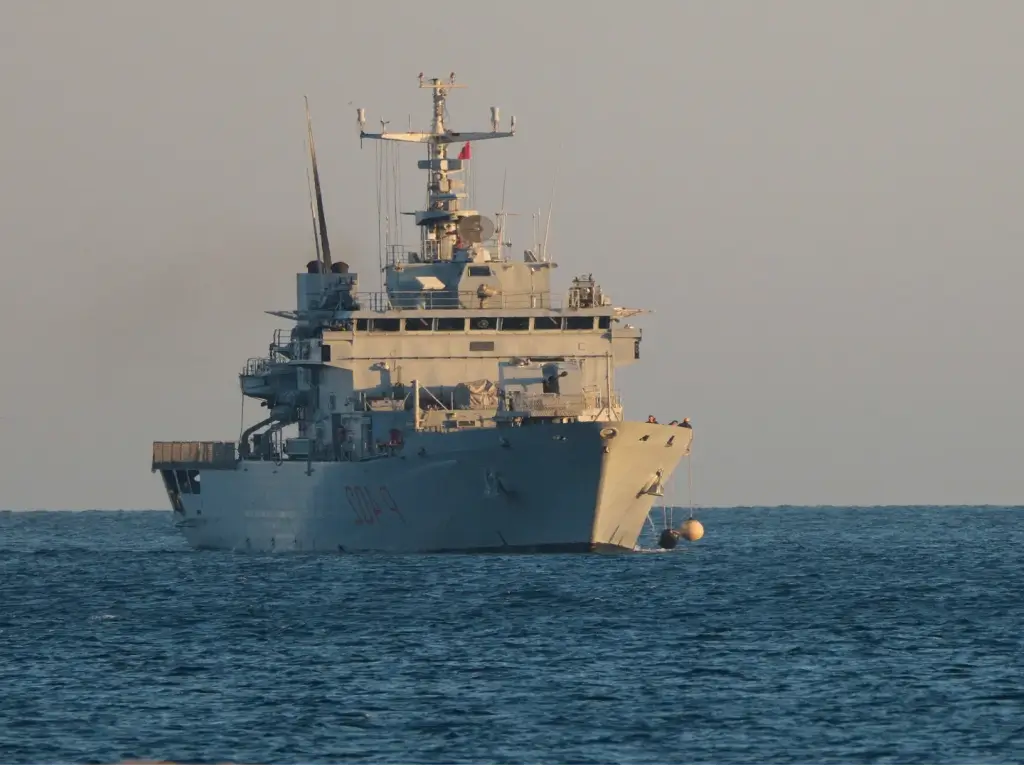Table of Contents
This has brought about a new twist on the migrating crisis that has plagued Europe in the past few years, when an Italian navy ship Libra disembarked at the Shengjin port in Albania on October 16th, 2024, with the first set of 16 migrants who were arrested while in international waters. This is a shift in tackling the issue of migration while trying to sort out the legal admissions to the country through collaboration with Albania’s Centre for Asylum Seekers.
Migrants Rescued at Sea
The Libra left Lampedusa port with 16 male passengers, 10 of them from Bangladesh and six from Egypt, who were resuscitated offshore after they left Libya. This operation forms part and parcel of Italy’s plan to handle the escalating influx of migrants attempting to cross the Mediterranean Sea.
New Processing Centers in Albania
These migrants arrive at a time when Italy has formally inaugurated two processing centers in Albania that will host thousands of asylum seekers outside Italy. While these centers will only host adult male refugees, women, children, the elderly, and victims of torture will be hosted in Italy to protect them from further exploitation.
The Italian Ambassador in Albania, Fabrizio Bucci, said that those centers are ready for use, although they were closed for some time because of problems in constructing the Gjader facility. The Gjader Center, capable of accommodating up to 3,000 migrants, will start with 400 and expand to 880 in the next few weeks.
Declining Migration Rates
However, the number of people arriving in Italy through the so-called central Mediterranean route has reduced drastically. The Italian Interior Ministry stated that 54,129 migrants had reached Italy via sea by October 15, 2024, a 138,947 migrants arrived during the same period in the previous year: 61% down. This challenge shows the interaction and relationship between migration and the change of different policies and world treaties.
Agreement with Albania
As part of the deal made in November last year between Italian PM Giorgia Meloni and Albanian PM Edi Rama, Italy will relocate up to 3,000 migrants rescued in international waters by Italy’s coast guard to Albania each month. Chapters three and four present the results of the first and second assessments that the rescue ships and then, on their arrival in Albania, will perform.
Total costs for the creation and running of these two centers are estimated at 670 million euros, or $730 million, for the first five years. However, even though these facilities are owned and managed by Italy and hold Italian laws, the external security will be performed by Albanians.
The first center in Shengjin, 66 kilometers (40 miles) northwest of Tirana, is for the preliminary evaluation of the entrants. The second one at Gjader, some 22 km east of Shengjin, will house migrants while waiting to be processed for asylum.
Asylum rights and controversy
Asylum seekers continue to have the rights under international and EU law to seek asylum in Italy, and such rights, including the right to relocation from Albania, will remain protected for migrants in Albania. The asylum claims are to be decided within a period not exceeding 28 days or at most take appeals. Asylum seekers who will be allowed to be in Italy will be welcomed, while those rejected will be expelled directly to Albania.
While some EU countries struggling with a large number of refugees have backed the deal, it has been criticized by human rights bodies. The problem is that charging asylum seekers’ housing to a non-EU country is potentially a menace and may put in danger the lives of those seeking refuge, critics say.
Prime Minister Rama stressed that the decision not to open similar centers for other countries was made because Albania saw this agreement as a reward for the help Italy has provided for Albania over the years, including during the crisis in the early 1990s and the 2019 earthquake.
A New Approach to Migration Challenges
Meloni and her far-right partners have always been insisting on a more equitable division of the burden of managing migration in European countries. In their analysis, Europe has depicted the accord signed between Albania and the EU as a creative way of finding a lasting solution for a hopeless problem that has put the cohesion as well as efficiency of the EU’s migration policies to the test.
As the situation changes, cooperation between Italy and Albania can become a template for further actions dealing with migration in Europe or can inspire model legislation, but at the same time, the issues of refugees’ humanitarian conditions and human rights come to the agenda.










